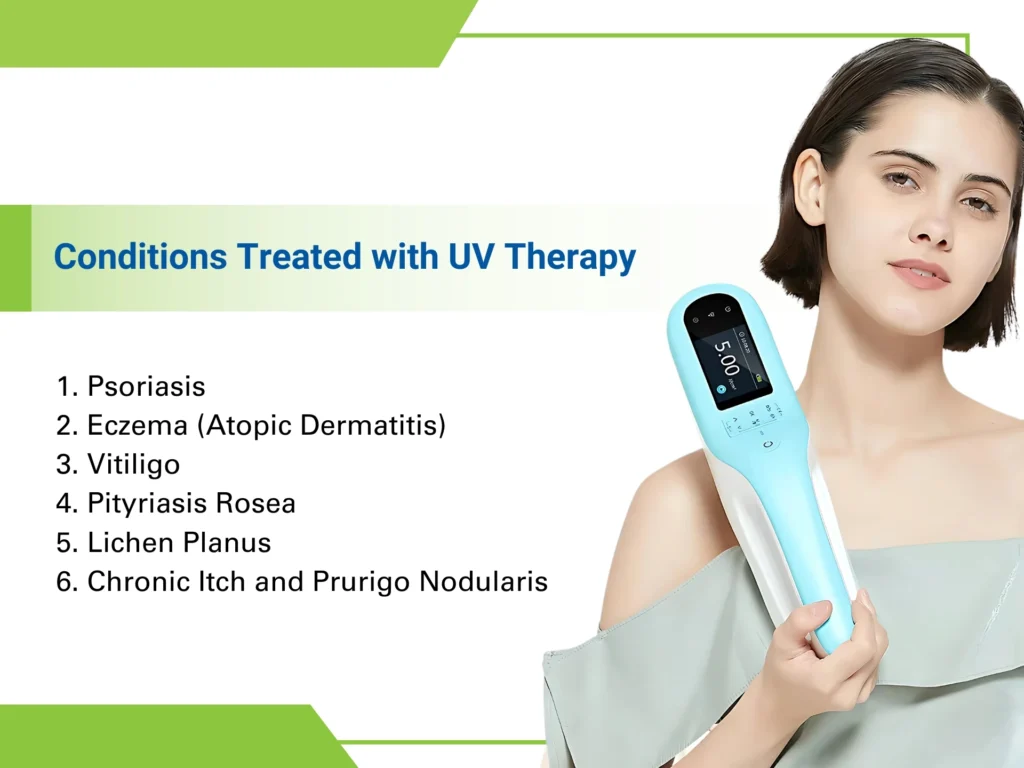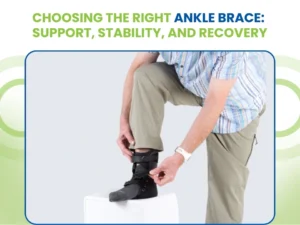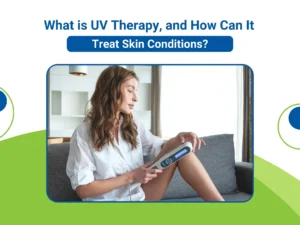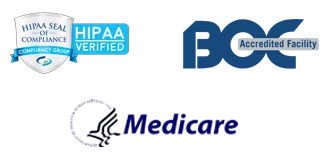Ultraviolet (UV) therapy, also referred to as phototherapy, is a medically supervised treatment that employs controlled UV light to manage and improve various skin conditions. This non-invasive approach has become widely recognized for its effectiveness in treating chronic and challenging skin issues, such as psoriasis, eczema, and vitiligo. With its ability to target underlying skin abnormalities directly, UV therapy offers a safe and reliable option for individuals seeking relief from persistent symptoms. This article delves into the science, benefits, and various types of UV therapy, shedding light on its applications and effectiveness.
Understanding UV Therapy
UV therapy involves exposing affected skin areas to carefully calibrated doses of ultraviolet light, primarily UVB (ultraviolet B) and UVA (ultraviolet A) rays. These wavelengths penetrate the skin’s layers, addressing the root causes of many skin disorders by modulating immune responses, slowing down excessive cell production, and restoring pigmentation.
How Does UV Therapy Work?
UV therapy offers a targeted solution for many individuals who have not responded well to conventional treatments, making it a cornerstone of modern dermatology. Here is how UV Therapy works:
- Reduction of Inflammation: UV light targets the skin’s immune cells, curbing inflammatory responses and alleviating redness, swelling, and irritation.
- Slows Cell Turnover: In conditions like psoriasis, where skin cells regenerate at an accelerated rate, UV therapy normalizes cell production, reducing plaques and scaling.
- Repigmentation: For conditions such as vitiligo, UV light stimulates melanocytes—the pigment-producing cells—promoting the return of natural skin colour in affected areas.
- Boosts Skin Immunity: By modulating overactive immune cells, UV therapy helps maintain a balanced immune response, reducing the frequency and severity of flare-ups.
Types of UV Therapy
UV therapy encompasses several methods tailored to meet diverse patient needs, ensuring effective treatment across various skin conditions.
1. Narrowband UVB (NB-UVB) Therapy
- Specific Wavelengths: Delivers light within a narrow range (311–313 nm), making it highly targeted and effective.
- Applications: Proven to be particularly beneficial for psoriasis, eczema, and vitiligo.
- Advantages: Known as the gold standard due to its precision, fewer side effects, and higher efficacy compared to older broadband UVB treatments.
2. Broadband UVB Therapy
- Generalized Wavelengths: Covers a wider spectrum of UVB light.
- Use Cases: Effective for treating generalized skin conditions, though less precise than NB-UVB therapy.
- Popularity: Often used as an initial treatment for widespread skin issues before transitioning to more targeted methods.
3. UVA Therapy
- Deeper Penetration: UVA rays penetrate the deeper layers of the skin compared to UVB, making it suitable for treating complex skin disorders.
- PUVA Combination: Frequently combined with a photosensitizing agent (psoralen) to enhance effectiveness for severe psoriasis and other stubborn skin conditions.
- Enhanced Treatment: Particularly effective for individuals with thick plaques or conditions resistant to UVB therapy alone.
4. Excimer Laser Therapy
- High-Intensity Precision: Focuses UVB light on localized areas, making it ideal for small patches of affected skin.
- Best for Localized Conditions: Effective for treating stubborn plaques in psoriasis or isolated depigmented patches in vitiligo.
- Advantages: Minimizes exposure to healthy skin, reducing the risk of side effects.
By offering a range of tailored approaches, UV therapy ensures that patients receive treatments best suited to their unique condition, enhancing outcomes and minimizing discomfort.
Conditions Treated with UV Therapy
UV therapy is a versatile and highly effective treatment for managing a wide range of chronic skin conditions. By targeting underlying causes such as inflammation and overactive immune responses, UV therapy provides both relief and long-term benefits for many patients.
1. Psoriasis
- Inflammation Reduction: UV therapy reduces redness, swelling, and irritation associated with psoriatic plaques.
- Cell Turnover Regulation: It slows the rapid production of skin cells, a hallmark of psoriasis, leading to smoother, healthier skin.
- Maintenance Therapy: With regular treatments, many individuals achieve prolonged remission, significantly improving their quality of life.
2. Eczema (Atopic Dermatitis)
- Itch and Irritation Relief: UV light soothes the skin, alleviating persistent itching and discomfort.
- Alternative for Resistant Cases: This is particularly helpful when topical treatments like corticosteroids fail to provide adequate relief.
- Improves Skin Barrier: Regular therapy enhances the skin’s natural barrier, reducing flare-ups and improving hydration.
3. Vitiligo
- Repigmentation: UV therapy stimulates melanocytes to produce melanin, gradually restoring colour to depigmented patches.
- Targeted Results: It is especially effective for small, localized areas of vitiligo, offering noticeable improvements with consistent use.
- Confidence Booster: For many individuals, repigmentation improves not only their physical appearance but also their self-esteem.
4. Pityriasis Rosea
- Accelerated Healing: UV therapy helps reduce the duration and severity of this self-limiting condition.
- Symptom Management: It alleviates itching and discomfort, making the healing process more manageable for patients.
5. Lichen Planus
- Inflammation Control: UV light reduces the immune system’s overactivity, which causes the rash and discomfort associated with lichen planus.
- Symptom Alleviation: Therapy often leads to significant improvements in both appearance and sensation, restoring comfort to affected areas.
6. Chronic Itch and Prurigo Nodularis
- Nerve Calming: UV therapy soothes overactive nerve endings, providing relief from persistent itchiness.
- Anti-Inflammatory Effects: It reduces inflammation in the deeper layers of the skin, offering long-term relief from symptoms.
Benefits of UV Therapy
UV therapy offers a multitude of advantages for individuals managing chronic and challenging skin conditions. When administered under professional supervision, it delivers targeted, effective, and lasting results.
1. Non-Invasive Treatment
- No need for injections, surgery, or systemic medications.
- Patients experience relief without the risks associated with more invasive procedures.
2. Targeted Relief
- UV therapy focuses directly on problem areas, minimizing exposure to unaffected skin.
- This precision reduces side effects and maximizes treatment effectiveness.
3. Reduced Dependence on Medication
- Many patients find that UV therapy decreases their reliance on systemic drugs, such as steroids or immunosuppressants, which can have significant side effects.
- Offers a natural alternative for long-term symptom management.
4. Long-Term Remission
- Consistent treatment can lead to extended periods without symptoms, significantly improving patients’ quality of life.
- Regular maintenance therapy helps prevent relapses and keep flare-ups at bay.
5. Safe When Supervised
- Administered under the guidance of trained professionals, UV therapy is carefully monitored to minimize risks like overexposure or burns.
- Advanced equipment and protocols ensure safety and effectiveness for all patients.
What to Expect During UV Therapy?
UV therapy sessions are designed to be simple and effective, ensuring maximum benefits with minimal risks. Typically conducted in a clinical setting under the supervision of a dermatologist, these sessions are tailored to your specific condition and skin type. Here’s what you can anticipate:
1. Initial Consultation
- A dermatologist or healthcare provider will perform a thorough evaluation of your skin condition, medical history, and treatment goals.
- Based on the assessment, they will recommend a customized treatment plan, including the type of UV therapy (NB-UVB, PUVA, etc.) and session frequency.
2. Protective Measures
- To ensure safety, you’ll be provided with goggles to shield your eyes from UV exposure, reducing the risk of irritation or damage.
- Sensitive areas, such as the face or genitals (if not being treated), may be covered with clothing or sunscreen to prevent unnecessary exposure.
3. Short Sessions
- Initial treatments are brief, typically lasting a few minutes, as your skin acclimates to the UV exposure.
- Over time, the duration of sessions may gradually increase, depending on your skin’s tolerance and therapeutic response.
4. Frequency
- Most treatment plans involve sessions 2-3 times per week. The consistency of sessions is crucial for achieving optimal results.
- Missing sessions or deviating from the recommended schedule can delay progress or reduce effectiveness.
5. Results
- Improvements, such as reduced redness, scaling, or itching, may become noticeable after a few weeks of regular treatment.
- Full benefits often require several months of therapy, particularly for chronic or severe conditions. Your dermatologist will monitor progress and adjust the plan as needed.
Risks and Side Effects
While UV therapy is a safe and effective treatment for many skin conditions, it’s important to understand the potential risks and side effects. These are typically minimal when sessions are conducted under professional supervision:
1. Mild Sunburn
- Overexposure can lead to temporary redness, irritation, or a mild burning sensation, similar to a sunburn.
- Applying a gentle, fragrance-free moisturizer or aloe vera can help soothe the skin and accelerate healing.
2. Skin Aging
- Long-term use of UV therapy may contribute to premature ageing of the skin, including the development of fine lines, wrinkles, or pigmentation changes.
- Regular use of moisturizers and antioxidant-rich skincare products can help mitigate these effects.
3. Increased Risk of Skin Cancer
- Prolonged or excessive UV exposure can elevate the risk of developing skin cancer, particularly if sessions are not monitored.
- This risk is minimized when therapy is conducted in a controlled clinical setting with appropriate precautions.
4. Eye Damage
- Inadequate eye protection during sessions can result in temporary irritation or long-term complications, such as cataracts.
- Wearing protective goggles during every session is essential to safeguard your vision.
5. Dryness or Flaking
- Some patients may experience temporary dryness or flaking of the skin in treated areas.
- Regular hydration and gentle exfoliation (if approved by your dermatologist) can help manage this issue.
Read More: The Benefits of UV Light Therapy for Psoriasis: A Comprehensive Guide
Who Should Avoid UV Therapy?
Not everyone is a suitable candidate for UV therapy, as certain conditions or medications can increase risks:
1. History of Skin Cancer
Individuals with a personal or family history of melanoma or other skin cancers may face heightened risks with UV therapy.
2. Photosensitive Conditions
Diseases like lupus or porphyria, which cause heightened sensitivity to UV light, may be exacerbated by therapy.
3. Sun-Sensitizing Medications
Medications such as certain antibiotics, diuretics, or chemotherapy drugs can increase UV sensitivity, raising the risk of burns or other side effects.
4. Genetic Disorders
Conditions like xeroderma pigmentosum, which impair the skin’s ability to repair UV damage, are contraindications for this therapy. A thorough consultation with your dermatologist is essential to determine if UV therapy is appropriate for your medical history and current condition.
Tips for Maximizing Benefits of UV Therapy
To ensure you get the most out of your UV therapy sessions, follow these practical tips:
1. Follow Your Dermatologist’s Instructions
Adhering to the recommended schedule and treatment guidelines is crucial for achieving safe and effective results.
2. Hydrate and Moisturize
Keep your skin well-hydrated before and after sessions to reduce dryness and enhance therapeutic effects. Use gentle, fragrance-free moisturizers to maintain skin health.
3. Protect Unaffected Skin
Apply sunscreen or wear protective clothing on areas not undergoing treatment to minimize unintended UV exposure.
4. Track Your Progress
Keep a journal of your skin’s response to therapy, noting improvements or any adverse reactions. Share this information with your dermatologist to refine your treatment plan if needed.
5. Complement with Healthy Habits
Pair UV therapy with a balanced diet, stress management, and proper skin care routines for comprehensive improvement.
Conclusion
UV therapy has proven to be an effective, non-invasive solution for managing chronic skin conditions like psoriasis, eczema, and vitiligo. By targeting inflammation, slowing abnormal cell turnover, and promoting healing, this treatment offers significant relief and an enhanced quality of life for many patients.
With advancements in UV technology and careful medical supervision, UV therapy continues to be a trusted and accessible option in dermatological care. If you’re ready to explore how UV therapy can benefit your skin, consult a dermatologist today and take the first step toward healthier, more comfortable skin.









